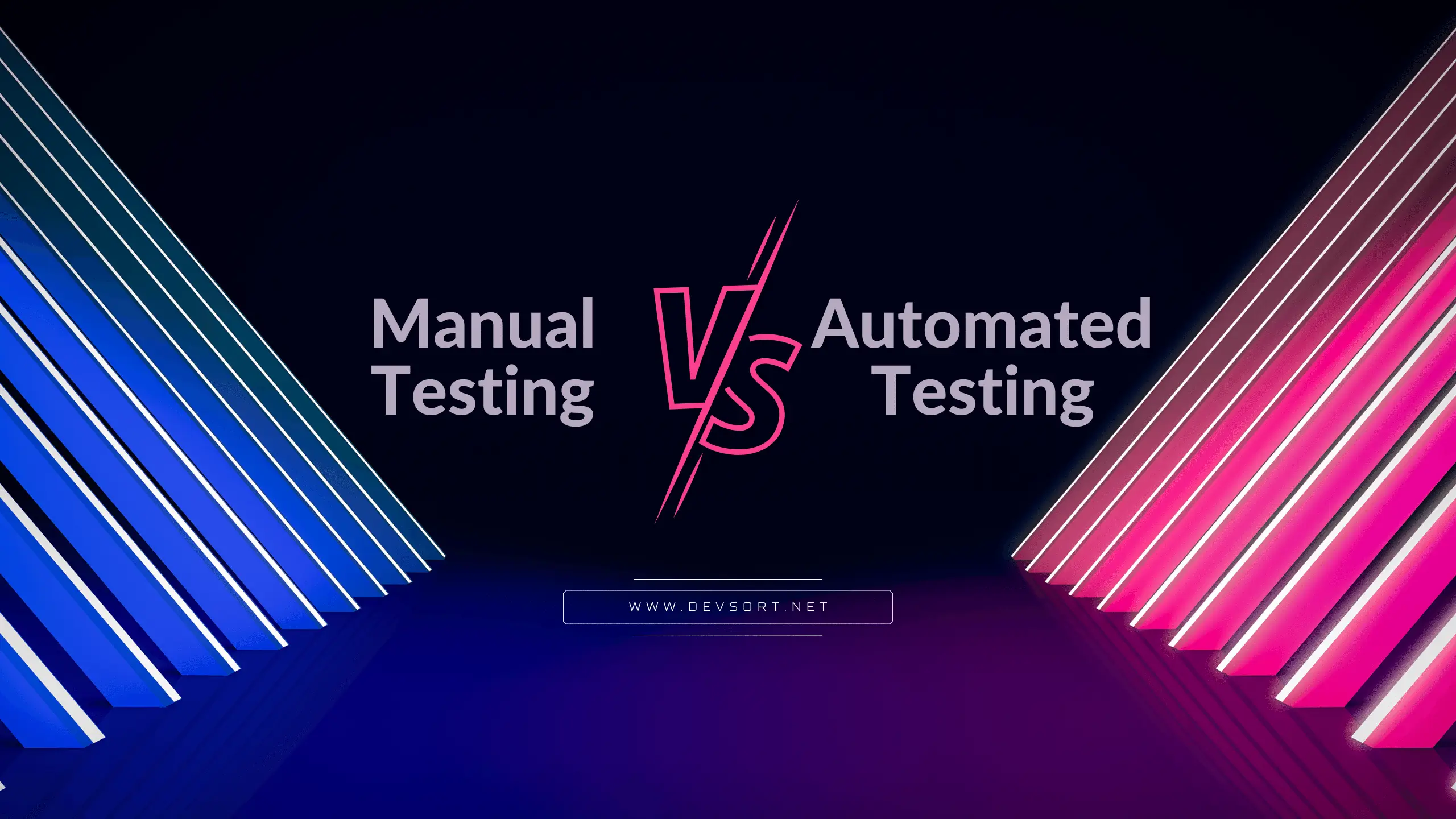Software testing is a process of evaluating software products and determining whether they meet user needs. Testers use different testing techniques to find bugs (errors), verify functionality, and ensure the product works as expected.
In this article, we’ll cover the differences between manual and automated software testing so you can decide which approach is best for your project.
But first…
What are Manual and Automated Software Testing?
Manual software testing is a type of testing that involves human testers executing test cases manually. It’s a process that requires testers to follow a set of pre-defined test cases to find bugs in the software being tested.
Automated software testing, on the other hand, involves using software tools to run pre-scripted tests on a software product. These tests can be run repeatedly and at any time, which makes them more reliable than manual tests. Automated software testing is also faster, more scalable, and can provide more accurate results than manual testing.
Benefits of Manual Software Testing
- Low cost: Manual software testing is the least expensive, requiring no special equipment or software. It is also fast and easy to learn, making it ideal for small teams that need help with their testing efforts.
- Flexibility: Manual testing can be done anywhere you can access a computer, which means there are no geographical limitations on where your team can work from. In addition, manual testers tend to be more flexible in their hours than automated testers (who may need specific hours set aside for running tests), which makes them easier for companies with remote offices or employees who frequently travel between locations.
- Human judgement: A key advantage of manual testing over automated methods is that human beings have unique abilities such as creativity and intuition–both qualities that computers don’t possess yet! These skills allow humans to think outside the box when identifying bugs or issues within an application’s codebase without relying solely on predetermined rulesets programmed into an algorithm by programmers beforehand.
Drawbacks of Manual Software Testing
- Time-consuming: Manual testing is a time-consuming process. It involves executing test cases manually and requires a lot of effort from the testers, who have to run through each step of the test case. It can be very frustrating for them when they don’t get any results or find bugs in their code but cannot reproduce them during manual testing.
- Prone to errors: Manual testing also has its own set of problems concerning accuracy and consistency because it’s all done by human beings who might make mistakes while performing tasks such as entering data into fields on web pages or clicking buttons on an application interface (UI). These errors could lead you astray from finding critical bugs in your software product before releasing it into a production environment where customers will use it regularly.
Benefits of Automated Software Testing
Automated software testing is a great way to ensure your app works properly. It has many benefits, including:
- Accuracy – Computers can perform automated tests repeatedly and at any time, so you know they will always give the same results. It makes them more reliable than manual tests, which may vary depending on who runs them or when they’re run.
- Scalability – Automated tests can also be used to test all of the features of an application at once rather than just one or two at a time (as would be done with manual testing). It means fewer people are needed on your team, saving money and freeing up resources for other projects or tasks within the company.
- Repeatability – With automated testing systems in place, there’s no need for human intervention as part of this process; everything happens automatically according to pre-defined rules.
- Speed – Finally–and most importantly–automated software testing allows users to get results faster than traditional methods, often within minutes instead of hours or days!
Drawbacks of Automated Software Testing
There are many drawbacks to automated software testing. First, it’s expensive to set up and requires specialized expertise. Second, automated tests can’t detect subtle changes in the code that may break something previously working correctly.
Comparing Manual and Automated Software Testing
The first thing to consider is the context in which you use automated testing. Manual testing may be more suitable for your needs if it’s a small project and you’re working independently. However, if you’re working on an enterprise-level application that requires thousands of hours of testing, automated testing might be the best option.
Automated software testing can also be used as part of regression or integration testing; however, manual testers will still need to perform some types of manual tests, such as exploratory and usability tests, because they require human interaction with applications being tested (and, therefore cannot be automated).
The Role of Automation in Software Testing
Automation is a great tool to help you improve your software testing process. The main advantage of automation is that it allows you to run tests quickly and repeatedly, which makes it easier to find bugs in your application. Regardless, some risks are associated with using automated tools; it’s crucial to understand how they work before deciding whether or not they’re suitable for your business.
Automated software testing tools had existed since the 1950s, when we first started using computers for scientific research. Since then, these programs have evolved significantly–and today, there are many different types available:
- Unit testing frameworks like JUnit or NUnit.
- Code coverage analyzers like Cobertura.
- Functional test automation suites like Selenium WebDriver (which uses browser automation) or FitNesse (which uses web services).
The Future of Software Testing
The future of software testing is bright and full of potential, but it’s also a bit hazy.
The first thing to consider is the increasing use of automation in the industry. Automated testing tools are becoming more popular as they become more sophisticated, and there needs to be an end in sight for their growth in popularity. This means that manual testers must learn how to use these tools if they want their jobs to remain relevant (or even exist).
Automation can be used as both a supplement and an alternative method for performing tests on software products–and both approaches have their benefits and drawbacks. The main advantage of using automation as a supplement is that it allows human testers more time for exploratory testing or other types of analysis; conversely, this approach has its downsides: because automated tests are often very rigidly defined by developers who don’t always know what kind of bugs might arise during real-world usage scenarios (such as edge cases), there may be times when an automated test fails but doesn’t indicate any problems with your application’s functionality at all!
It leads developers to make poor decisions about what needs fixing before release time again next month.
Conclusion
In conclusion, automated and manual software testing has benefits and drawbacks. While automated testing offers efficiency and speed, it may only suit some testing scenarios. Manual testing, on the other hand, provides a more thorough and intuitive approach, but it can be time-consuming and prone to human error.
Ultimately, the choice between automated and manual testing should be based on the project’s specific needs and the testing process’s goals. By understanding the advantages and limitations of each approach, software developers and testers can create a more effective and reliable software testing strategy that delivers high-quality results.


